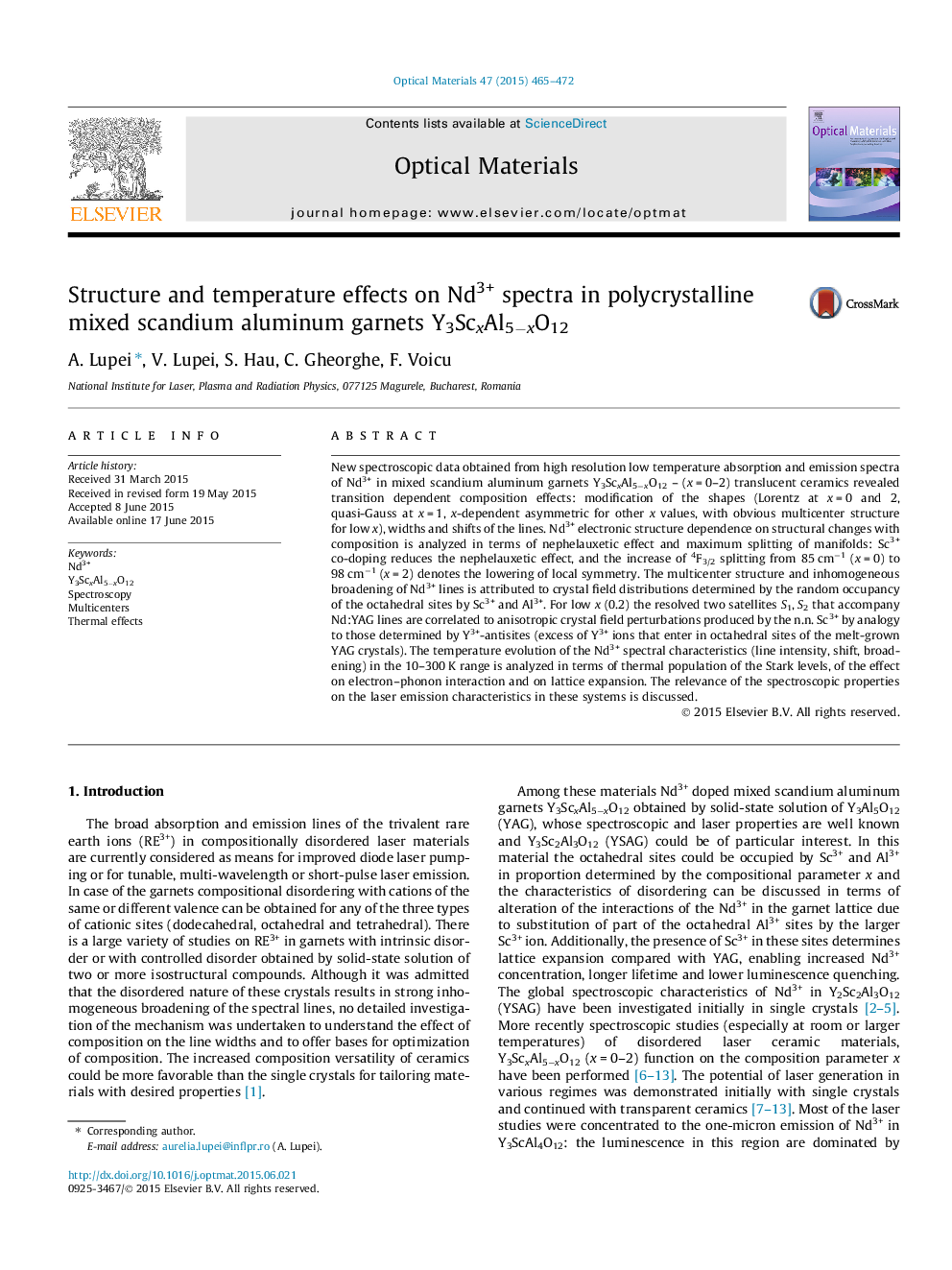| Article ID | Journal | Published Year | Pages | File Type |
|---|---|---|---|---|
| 1493741 | Optical Materials | 2015 | 8 Pages |
•Low temperature spectra of Nd3+ in Y3ScxAl5−xO12, x = 0–2 ceramic garnets.•Composition effects on Nd3+ electronic structure and line shapes in Y3ScxAl5−xO12.•Multicenter effects due to mixed occupancy of octahedral sites by Al3+ and Sc3+.•Presence of Sc3+ increases the low symmetry distortion of the Nd3+ site.•Temperature evolution (intensities, shifts, broadening) of Nd3+:Y3ScxAl5−xO12.
New spectroscopic data obtained from high resolution low temperature absorption and emission spectra of Nd3+ in mixed scandium aluminum garnets Y3ScxAl5−xO12 – (x = 0–2) translucent ceramics revealed transition dependent composition effects: modification of the shapes (Lorentz at x = 0 and 2, quasi-Gauss at x = 1, x-dependent asymmetric for other x values, with obvious multicenter structure for low x), widths and shifts of the lines. Nd3+ electronic structure dependence on structural changes with composition is analyzed in terms of nephelauxetic effect and maximum splitting of manifolds: Sc3+ co-doping reduces the nephelauxetic effect, and the increase of 4F3/2 splitting from 85 cm−1 (x = 0) to 98 cm−1 (x = 2) denotes the lowering of local symmetry. The multicenter structure and inhomogeneous broadening of Nd3+ lines is attributed to crystal field distributions determined by the random occupancy of the octahedral sites by Sc3+ and Al3+. For low x (0.2) the resolved two satellites S1, S2 that accompany Nd:YAG lines are correlated to anisotropic crystal field perturbations produced by the n.n. Sc3+ by analogy to those determined by Y3+-antisites (excess of Y3+ ions that enter in octahedral sites of the melt-grown YAG crystals). The temperature evolution of the Nd3+ spectral characteristics (line intensity, shift, broadening) in the 10–300 K range is analyzed in terms of thermal population of the Stark levels, of the effect on electron–phonon interaction and on lattice expansion. The relevance of the spectroscopic properties on the laser emission characteristics in these systems is discussed.
